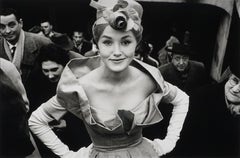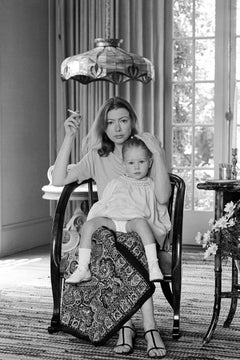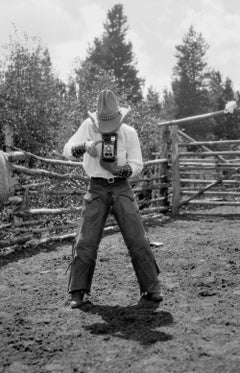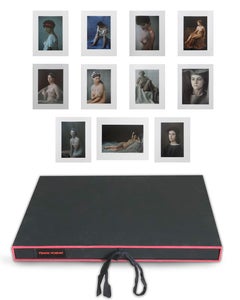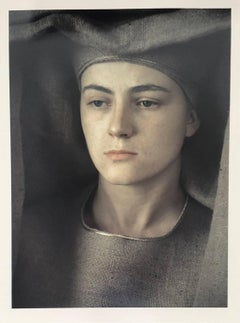Frank Horvat Art
The medium of photography owes a great deal to pioneer Frank Horvat. Never one to shy away from new techniques and technology, the internationally renowned photographer enjoyed a career spanning seven decades. His nude and portrait photographs — in color and black and white — were often shot off-site rather than in the studio and are credited with paving the way for modern French fashion photography.
Horvat was born in 1928 in Abbazia, Italy. When he was a teenager, he swapped his postage stamp collection for a 35 mm Retinamat camera, hoping to impress girls, which didn't work. However, Horvat did start teaching himself about photo composition. In 1947, he moved to Milan to study art at the Accademia di Brera.
In the early 1950s, Horvat traveled to Pakistan, India, London, New York and Paris, working as a photojournalist and fashion photographer. By the late 1950s he had made a name for himself for using his dynamic journalistic sense to breathe new life into fashion photography. The early 1960s marked the heights of his career, working for magazines like Harper's Bazaar, Elle, Glamour, Vogue, Revue and Jardin des Modes.
After a whirlwind in the spotlight, the 1970s saw Horvat winding down his fashion photography. Many magazines he once worked for closed their doors, so he pivoted to publishing photography books. His first personal project was called Portraits of Trees.
Always a maverick, Horvat was at the forefront of digital photography in the late 1980s. While there was resistance to the digital shift from other photographers, Horvat embraced the ease and convenience of the format. He was later a big proponent of Photoshop, as well.
Horvat continued releasing photography books throughout the rest of his life. In 2011, he received an award for his photographic career from the Centro di Ricerca e Archiviazione della Fotografia in Italy.
Horvat passed away in 2020, leaving behind a prolific photographic legacy. His work is held in the collections of the Museum of Modern Art, the Victoria and Albert Museum, the Bibliothèque Nationale de France and Kunstbibliothek Berlin, to name a few.
On 1stDibs, find a lively collection of Frank Horvat photography.
1950s Frank Horvat Art
Silver Gelatin
1960s Frank Horvat Art
Photographic Paper, Silver Gelatin
1920s Other Art Style Frank Horvat Art
Silver Gelatin
1960s Frank Horvat Art
Photographic Paper, Silver Gelatin
1990s Young British Artists (YBA) Frank Horvat Art
Silver Gelatin
Early 2000s Contemporary Frank Horvat Art
Silver Gelatin
1990s Contemporary Frank Horvat Art
Silver Gelatin
1980s Young British Artists (YBA) Frank Horvat Art
Silver Gelatin
Early 2000s Conceptual Frank Horvat Art
Silver Gelatin
1980s Frank Horvat Art
Silver Gelatin
1990s Contemporary Frank Horvat Art
Silver Gelatin
Early 2000s Conceptual Frank Horvat Art
Silver Gelatin
1990s Frank Horvat Art
Photographic Paper, Silver Gelatin
1990s Modern Frank Horvat Art
C Print, Dye Transfer, Archival Pigment
20th Century Modern Frank Horvat Art
Dye Transfer, Archival Pigment, Color
20th Century Modern Frank Horvat Art
Dye Transfer, Archival Pigment, Color
20th Century Modern Frank Horvat Art
Dye Transfer, Archival Pigment, Color
20th Century Modern Frank Horvat Art
Dye Transfer, Archival Pigment, Color
20th Century Modern Frank Horvat Art
Dye Transfer, Color, Archival Pigment
20th Century Modern Frank Horvat Art
Dye Transfer, Archival Pigment, Color
20th Century Modern Frank Horvat Art
Dye Transfer, Archival Pigment, Color
20th Century Modern Frank Horvat Art
Dye Transfer, Archival Pigment, Color
20th Century Modern Frank Horvat Art
Dye Transfer, Archival Pigment, Color
20th Century Modern Frank Horvat Art
Dye Transfer, Archival Pigment, Color
20th Century Modern Frank Horvat Art
Dye Transfer, Archival Pigment, Color
